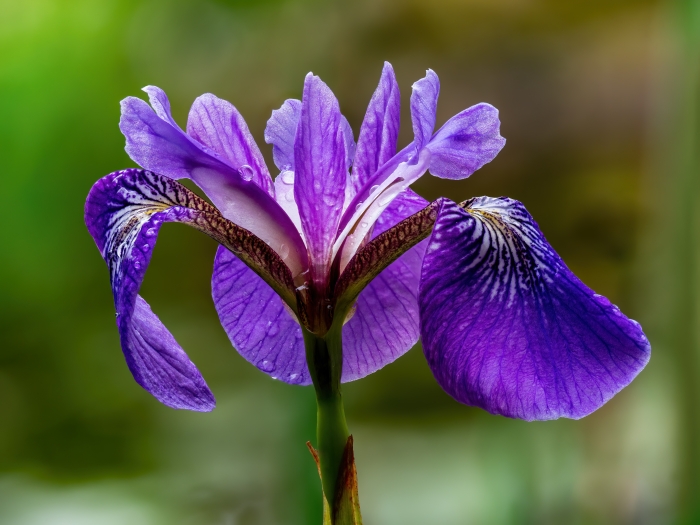German Bearded Iris
(Iris germanica)
German Bearded Iris (Iris germanica)
/
/

Ermell
CC BY-SA 4.0
Image By:
Ermell
Recorded By:
Copyright:
CC BY-SA 4.0
Copyright Notice:
Photo by: Ermell | License Type: CC BY-SA 4.0 | License URL: https://creativecommons.org/licenses/by-sa/4.0 | Uploader: Ermell | Publisher: Wikimedia Commons | Title: Iris_Germanica-20200620-RM-100933.jpg | Notes: Uploaded own work with UploadWizard |


































































Estimated Native Range
Summary
Iris germanica, commonly known as German Bearded Iris, is a semi-deciduous perennial herb. It is native to southern Europe and the Mediterranean region. This iris typically grows up to 120 cm (47 in) high and 30 cm (12 in) wide, with a rhizomatous growth habit. The sword-shaped leaves may partially die back in winter but often some green remains. It blooms from mid to late spring, with some cultivars offering a second bloom period in autumn. The flowers come in a wide array of colors, including shades of blue, purple, white, and yellow, often with intricate patterns and beards on the falls (lower petals).
German Bearded Iris is valued for its large, showy flowers and is widely used in borders, as specimen plants, and for cut flowers. It thrives in full sun and requires well-drained soil, preferably neutral to slightly acidic. While it can tolerate drought, consistent moisture is necessary during the growing season. Dividing the rhizomes every few years prevents overcrowding and rejuvenates the plant. Potential problems include iris borer, rhizome rot, and leaf spot. It is generally deer-resistant and attracts pollinators such as bees.CC BY-SA 4.0
German Bearded Iris is valued for its large, showy flowers and is widely used in borders, as specimen plants, and for cut flowers. It thrives in full sun and requires well-drained soil, preferably neutral to slightly acidic. While it can tolerate drought, consistent moisture is necessary during the growing season. Dividing the rhizomes every few years prevents overcrowding and rejuvenates the plant. Potential problems include iris borer, rhizome rot, and leaf spot. It is generally deer-resistant and attracts pollinators such as bees.CC BY-SA 4.0
Plant Description
- Plant Type: Bulb
- Height: 1-3 feet
- Width: 0.4-2 feet
- Growth Rate: Moderate
- Flower Color: Blue, Cream, Orange, Purple, White, Yellow
- Flowering Season: Spring, Summer
- Leaf Retention: Deciduous
Growth Requirements
- Sun: Full Sun
- Water: Medium
- Drainage: Medium
Common Uses
Bee Garden, Bird Garden, Border Plant, Butterfly Garden, Deer Resistant, Drought Tolerant, Fragrant, Hummingbird Garden, Low Maintenance, Potted Plant, Rabbit Resistant, Rock Garden, Salt Tolerant, Showy Flowers
Natural Habitat
Southern Europe and the Mediterranean region
Other Names
Common Names: German Iris , Bearded Iris , Flags , Flag Iris , Flags , Fleur De Lis , Florentine Iris , Garden Iris , Deutsche Schwertlilie , Iris Bleu D’Allemagne
Scientific Names: Iris germanica , Iris florentina , Iris illyrica , Iris sambucina , Iris alba , Iris amoena , Iris croatica , Iris trojana , Iris mesopotamica , Iris squalens
GBIF Accepted Name: Iris germanica L.